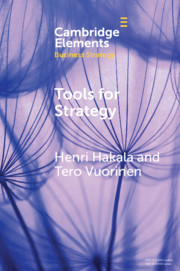Element contents
Tools for Strategy
Published online by Cambridge University Press: 28 August 2020
Summary
- Type
- Element
- Information
- Series: Elements in Business StrategyOnline ISBN: 9781108883757Publisher: Cambridge University PressPrint publication: 24 September 2020
References
- 16
- Cited by

